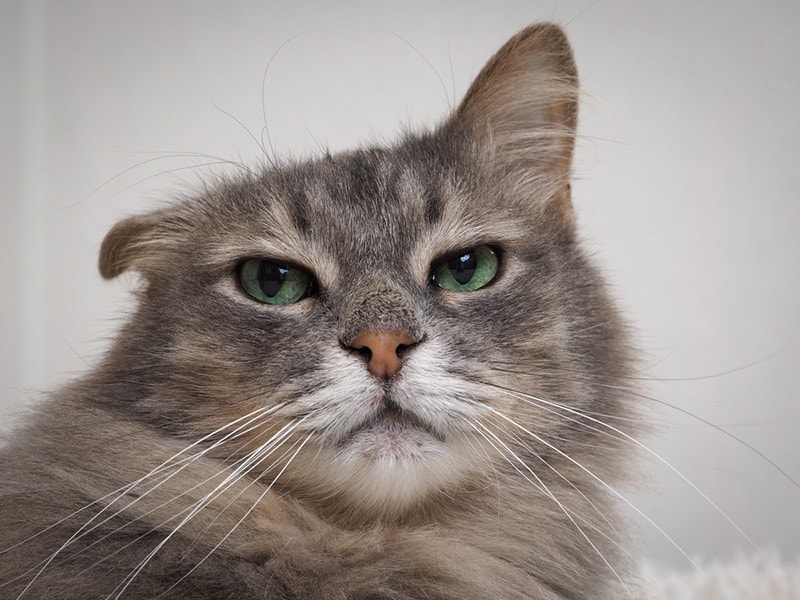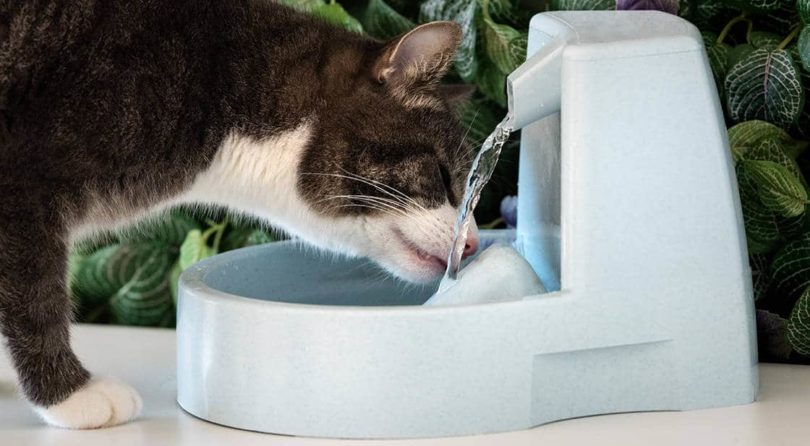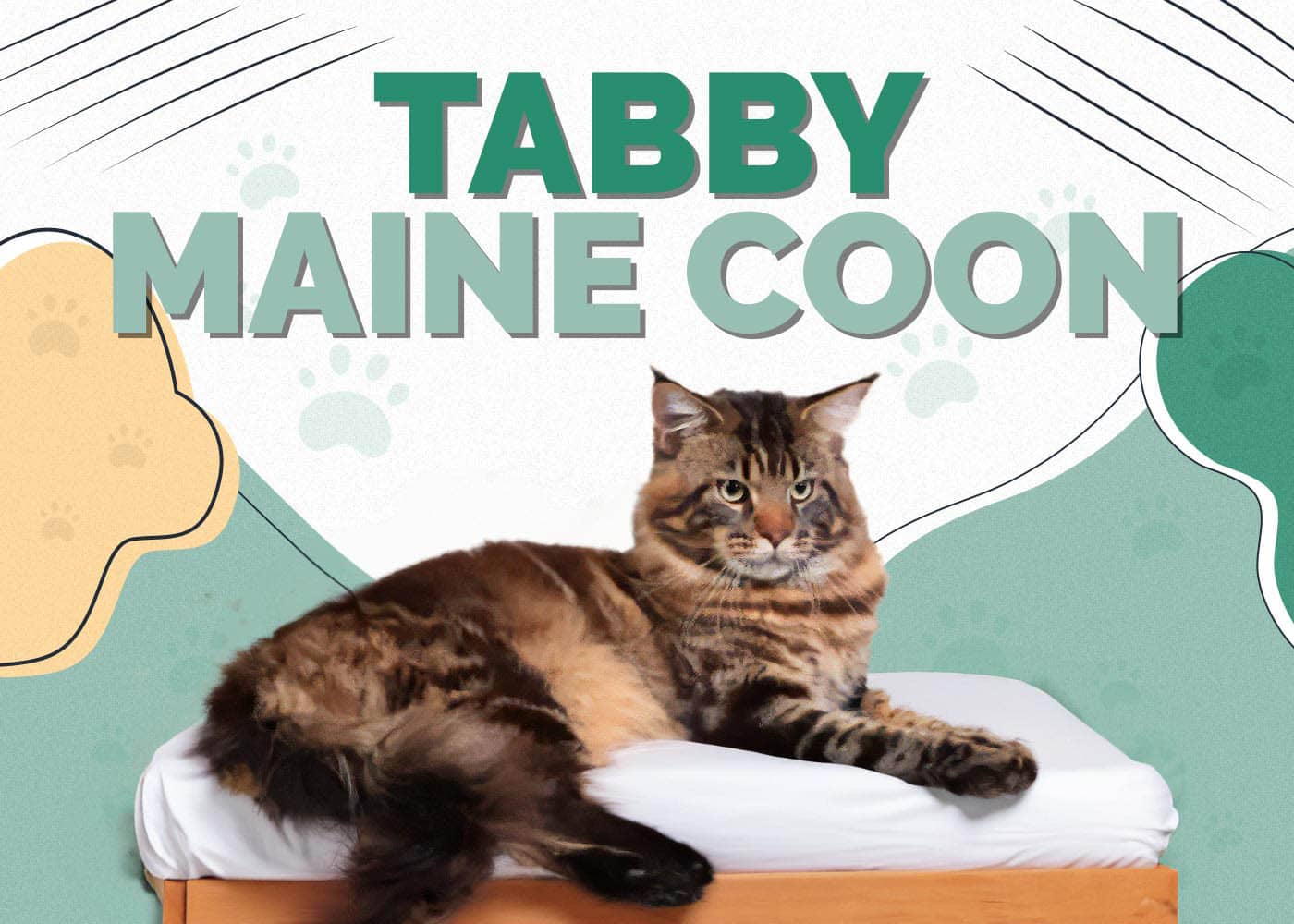Can Cats Eat Salad? Vet Approved Safety Guide & FAQ

Updated on
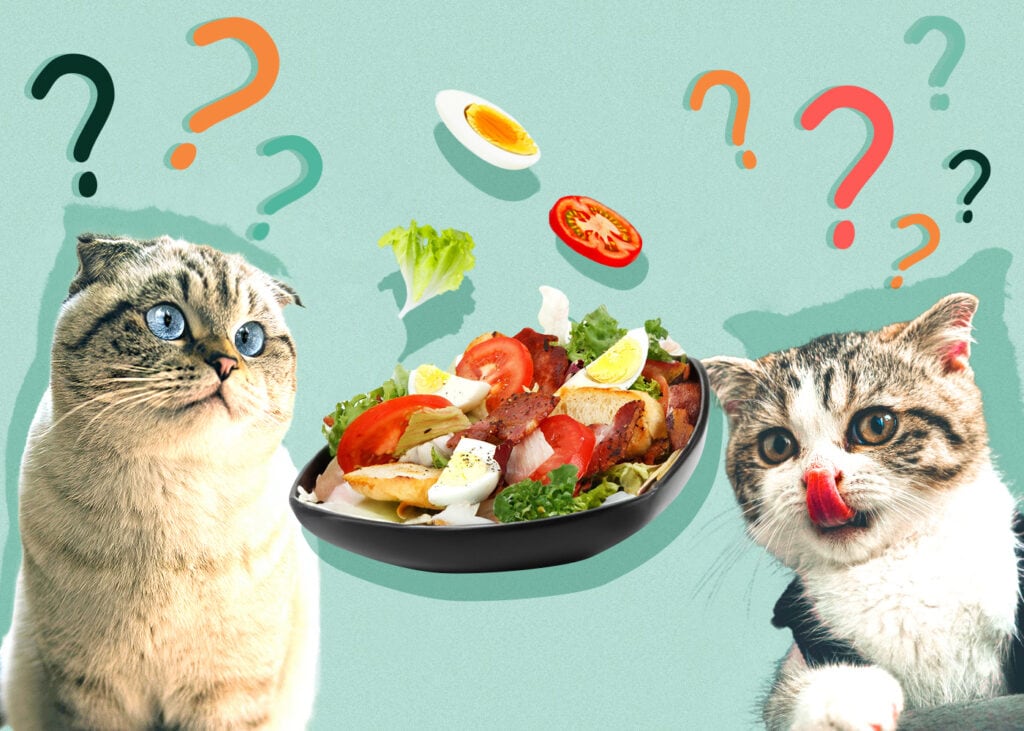
Cats are curious creatures. They often want to know what we’re doing, and that includes investigating what we’re eating. When cats show interest in our food, it’s tempting to give them a little taste. Most of the time, if you know that the food is safe for your cat to eat, this is not a problem. But what about salad?
When preparing a salad, the ingredients go far beyond plain lettuce. While cats can safely eat lettuce, salads have other components that may not be kitty-friendly. Whether your salad is safe for your cat to sample depends on how it’s made. Let’s look at the most common salad ingredients and how safe they are for your cat to eat.
Common Salad Ingredients
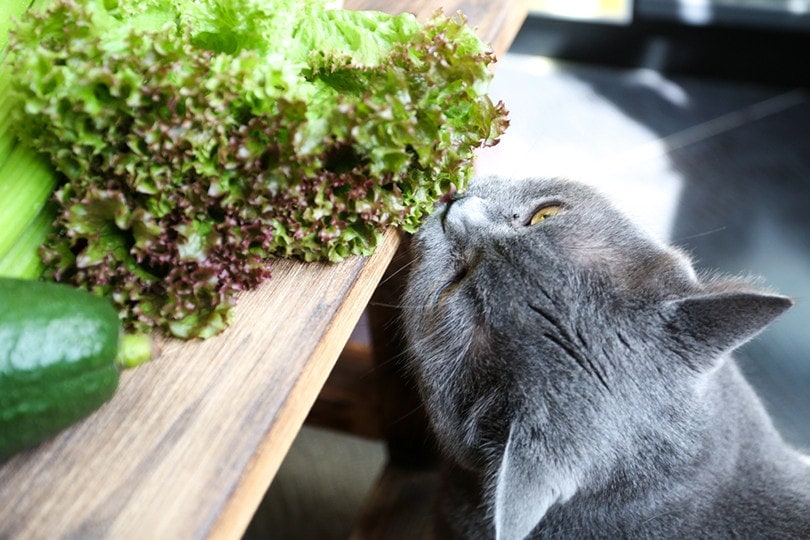
Many salads start with a lettuce base. Then, vegetables, cheese, and dressing are added, along with seasonings like salt and pepper. Cats are obligate carnivores. This is different from a carnivore. While carnivores thrive on a meat-based diet, obligate carnivores require meat in their diet to survive. Without adequate animal protein, cats can become seriously ill and die. Depriving cats of animal protein can have legal implications too. In certain jurisdictions, it is illegal to deprive them of these proteins.
As we look at common salad components and whether your cat can eat them, remember that cats can’t live on a strictly herbivorous diet. Even if they eat some parts of a salad safely, they need sufficient animal-based proteins to stay healthy.
Lettuce
Plain lettuce is safe for cats to eat. If you catch them sneaking a piece from your plate, there’s no need to worry. Lettuce is high in fiber and vitamins A and K. It’s also high in water content. Since many cats don’t drink enough water on their own, lettuce can give them a tiny boost of hydration.
Lettuce doesn’t provide any significant nutritional value to cats, but they can enjoy eating it. If your cat loves lettuce, offering them a piece here and there is fine. It should be used as a snack or treat, though, and not make up a large part of your cat’s regular diet.
Spinach
Spinach is high in fiber, vitamins, and omega-3 fatty acids. It has more nutritional value than iceberg lettuce and is even included in some cat foods. Cats can safely eat spinach. The only exception to this is if your cat suffers from calcium oxalate crystals in their urine. In these cases, spinach should not be offered. This leafy green contains small amounts of calcium oxalate. If your cat has no history of urine or kidney trouble, a small piece of spinach occasionally should not cause any health issues.
Tomatoes
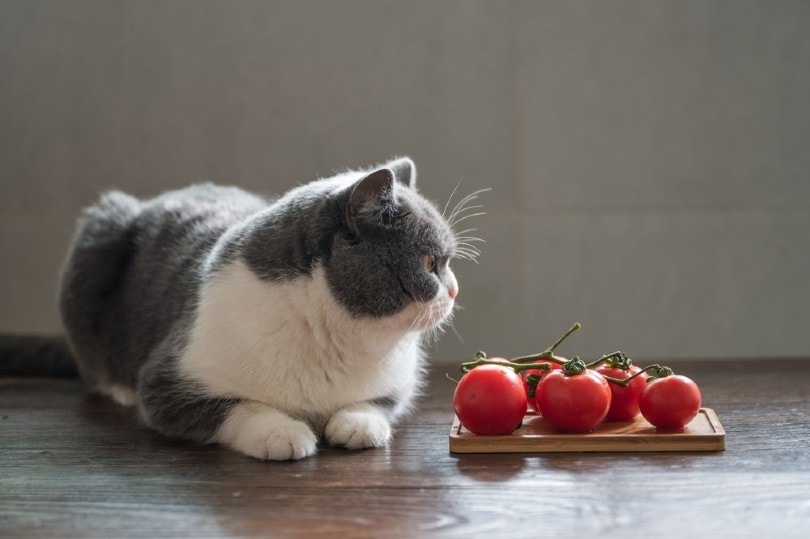
Ripe tomatoes are safe for your cat to eat in moderation. If they happen to eat a small piece of a ripened tomato, there’s nothing to worry about. Unripe tomatoes are another story, however.
Green tomatoes and the stems and leaves of tomato plants are toxic to cats. They contain solanine and tomatine, which have fungicidal and pesticidal properties. These are the plant’s natural defenses, but they can cause vomiting, lethargy, and heart problems in cats. If your cat is eating a piece of your tomato, make sure it’s fully ripened with the leaves and stem removed and that it is properly washed and sliced or diced into small pieces.
Garlic, Onions & Chives
All members of the allium family are toxic to cats. This includes garlic, shallots, leeks, scallions, chives, and all types of onions. Cats eating any of these plants (for example: onion), even in small quantities can quickly come down with many detrimental signs. The most common one is anemia. Red blood cells in cats are broken down by the disulfides and thiosulphates in onions. Whether the onion is cooked, powdered, raw, or dehydrated, it can still cause health problems.
Signs of allium poisoning include vomiting, diarrhea, lethargy, pale gums, rapid breathing, and an increased heart rate. Plants from this family should never be offered to your cat. Immediately take your cat to the vet if you suspect that they’ve ingested any of these plants in any form.
Cheese
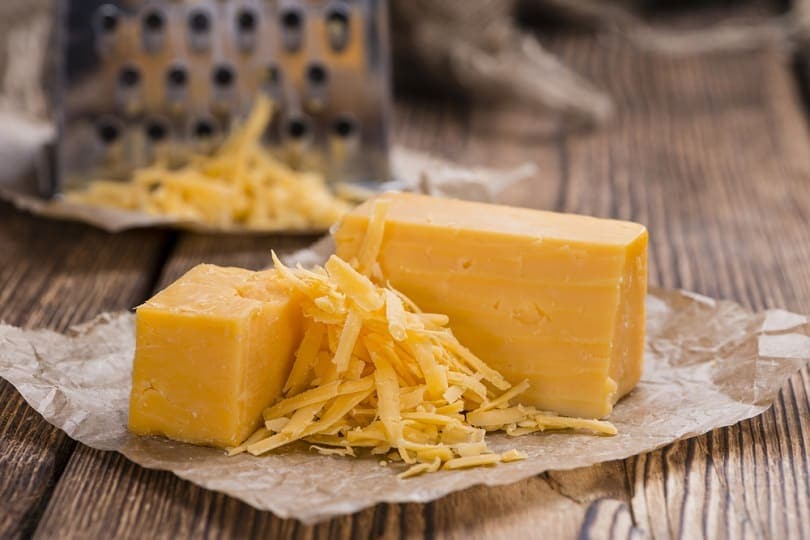
Cheese is not toxic to cats. However, most cats are unable to process dairy products. Unfortunately, your cat might beg you for a piece of cheese from your salad. Small bits of cheese won’t harm your cat, although they don’t need cheese or dairy in their diets. Cheese is also high in salt and fat. High-quality cat food will give your cat the proper amount of sodium and fat that they need. An excess of fatty foods can lead to obesity, which brings with it a host of other health problems.
Avoid giving your cat too much cheese. It can be enjoyed occasionally as a treat, but keep in mind that too much dairy can cause stomachaches and diarrhea in cats.
Bell Peppers
Bell peppers, like lettuce, are not toxic to cats. All colors of the peppers are safe for your cat to eat. Since bell peppers have a strong, intense flavor, though, your cat may not like them. If you have a kitty that loves bell peppers as a snack, they are perfectly safe to offer. While cats may not get much nutrition from them, they can eat this vegetable without any serious health risks.
Since bell peppers are high in fiber, your cat may have diarrhea after eating a piece. If this happens, then the pepper doesn’t agree with your cat and shouldn’t be offered again.
Olives
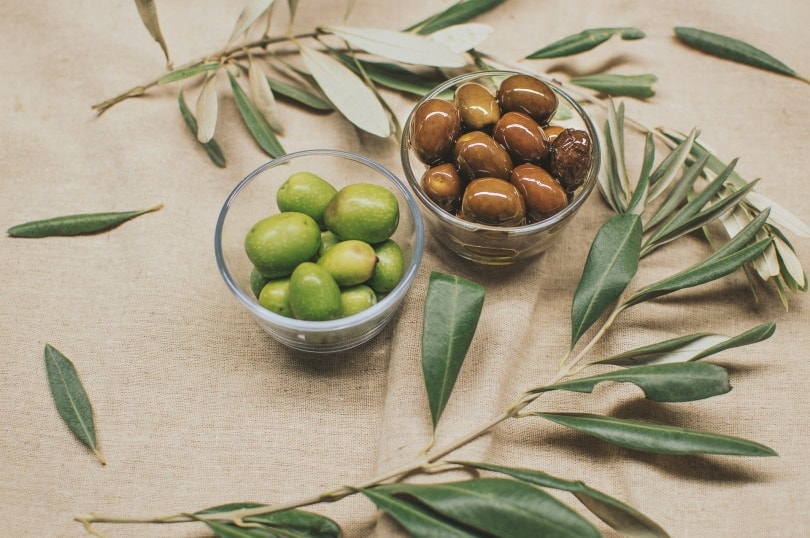
Green and black olives are not toxic to cats. The only issues are the preservative content and their pits.
Olives are usually packed in oil or brine. These aren’t recommended for cats, and can be easily removed by thoroughly washing the olives.
If you offer your cat an olive, be sure it’s rinsed first and does not contain a pit. Olive pits are choking hazards. Rinsed olives can be safely eaten by your cat in moderation. They should not be something that your cat eats regularly.
Croutons
Cats can safely eat small amounts of bread, so plain croutons won’t cause any harm. Croutons usually contain seasonings, though. Make sure the croutons don’t include any seasonings, especially onion and garlic powders. Croutons should not be eaten regularly by your cat, but a plain crouton from your salad can be an occasional treat.
Salad Dressings
To be safe, don’t allow your cat to eat any salad dressings. Many dressings contain onion and garlic, which are toxic to cats. Some dressings are made with dairy products, which can cause diarrhea. Vinaigrettes are made with oil, which can lead to stomach upset and diarrhea.
If your cat stumbles across your empty salad bowl and licks some of the dressing, it isn’t an immediate cause for concern. Just watch for signs of illness. However, salad dressing is not something that cats should eat regularly. If you’re sharing pieces of your salad with your cat, stick to one without any dressing.
Why Does My Cat Want My Salad?
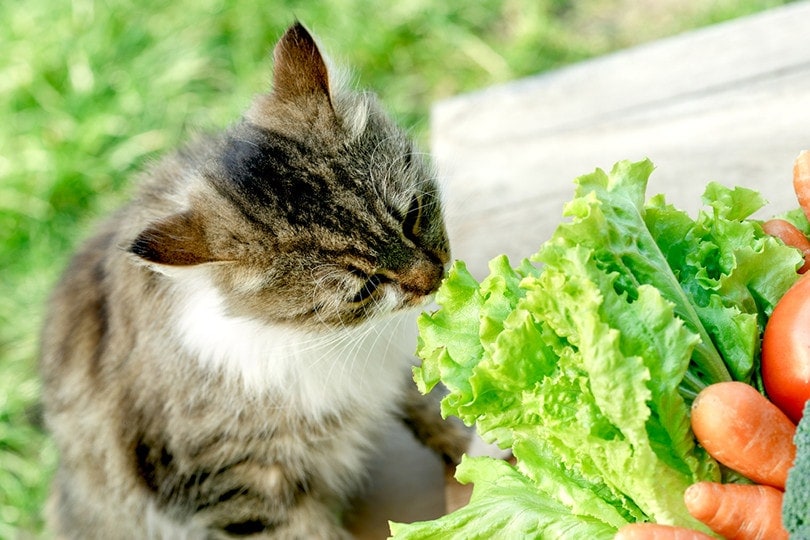
Some cats love lettuce. Outdoor cats nibble on grass and leaves. You may even notice your cat chewing your houseplants.
There are several theories about why cats do this, though the prevailing opinion is that they instinctively do this to expel parasites. Greens can also aid in your cat’s digestion. If you’re making a salad and your cat seems obsessed with the lettuce, offering them a few small pieces won’t hurt them.
You can also give your cat their own greens to chew and eat. Cat-safe plants to keep for your cat include:
- Catnip
- Catmint
- Common Sage
- Dandelion root
Please note that all of these should be given to your cat in moderation.
Now that you know what you can safely feed your cat, it’s just as important to find a bowl that supports their health and well-being. With whisker-friendly bowls and a wide tray to catch any spills, our Hepper NomNom Cat Bowl is our favorite option.
- NO MESS - The 360° tray on this cat food and water bowl set has a raised design to catch and...
- WHISKER FRIENDLY - Shallow and wide metal containers with flat bottoms ensure your kitty can enjoy...
Conclusion
Now that you know the safe ingredients that your cat can eat, you can share some from your next salad with them without worry. If your cat loves greens, lettuce and spinach are safe to give them in moderation. If you steer clear of seasoned croutons and salad dressing, your kitty can enjoy a fresh veggie or piece of cheese from your bowl. Onions, garlic, and green tomatoes should be completely avoided.
If you think that your cat has eaten human food and you’re not sure if it’s toxic, contact your vet or local pet poison control hotline.
Offering your cat pieces of food that you know that they can safely eat is a wonderful way to bond with your feline friend.
Related Reads:
- Can Cats Eat Chia Seeds? What You Need to Know!
- Can Cats Eat Deli Meat (Lunch Meat)? What You Need to Know!
Featured Image Credit: JillWellington, Pixabay





